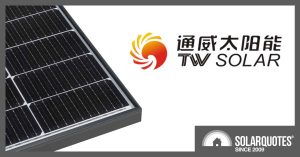Solar panels have become a cornerstone in sustainable energy solutions, offering a clean, renewable source of power. Understanding their lifespan is crucial for anyone considering solar energy as an investment.
Overview of Solar Panel Longevity
Factors Influencing Lifespan
The lifespan of solar panels depends on several factors, including material quality, environmental conditions, and maintenance practices. High-quality materials ensure a longer lifespan, while harsh weather conditions like extreme temperatures and hail can reduce it. Regular maintenance and cleaning also play a significant role in preserving their efficiency and longevity.
How Long Do Solar Panels Last?
Solar panels typically last between 25 to 30 years. However, this doesn't mean they stop producing electricity after this period; it simply indicates that their energy production efficiency decreases to a level considered less optimal. During their lifetime, solar panels generally maintain above 80% of their original efficiency. Learn more about solar panel longevity.
Detailed Aspects Impacting Solar Panel Performance
Power Output and Efficiency Over Time
The power output of solar panels gradually decreases over time. This process, known as degradation rate, varies depending on the panel type. On average, solar panels lose about 0.5% to 1% of their efficiency annually. For example, a panel with an initial efficiency of 18% might drop to around 14% after 25 years.
Cost, Budget, and Value
The initial cost of solar panels is a significant investment, but it's important to consider the long-term savings on energy bills. The average cost varies based on size, specifications, and quality, with prices typically ranging from $15,000 to $25,000 for residential installations. The long-term value, measured in savings and reduced carbon footprint, often outweighs the upfront cost.
Size, Specifications, and Lifespan
Solar panels come in various sizes and specifications, tailored to different needs and spaces. Residential panels typically measure around 65 inches by 39 inches, but sizes can vary. The lifespan of a panel is closely tied to its specifications, including the materials used and the manufacturing process.
Material Quality and Durability
The materials used in solar panels significantly affect their durability and lifespan. Silicon, the most commonly used material, offers a good balance of efficiency and cost. Newer materials like perovskite are emerging, potentially offering higher efficiency rates.
Advantages and Potential Drawbacks
The main advantage of solar panels is their ability to produce clean, renewable energy, reducing reliance on fossil fuels. However, their effectiveness can be limited by factors like geographic location, roof orientation, and shading. Additionally, the disposal and recycling of old panels pose environmental challenges.
Conclusion
Solar panels offer a sustainable energy solution with a considerable lifespan. Their efficiency, cost, and environmental impact make them a viable option for those looking to invest in renewable energy. Proper understanding and maintenance can maximize their lifespan and benefits.

